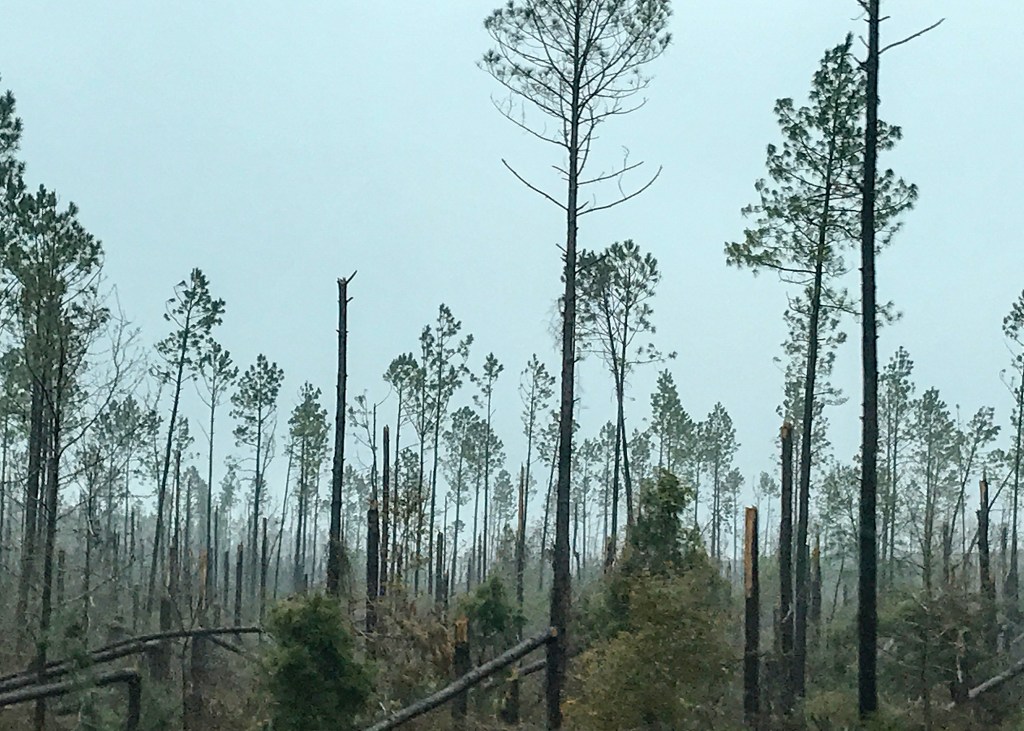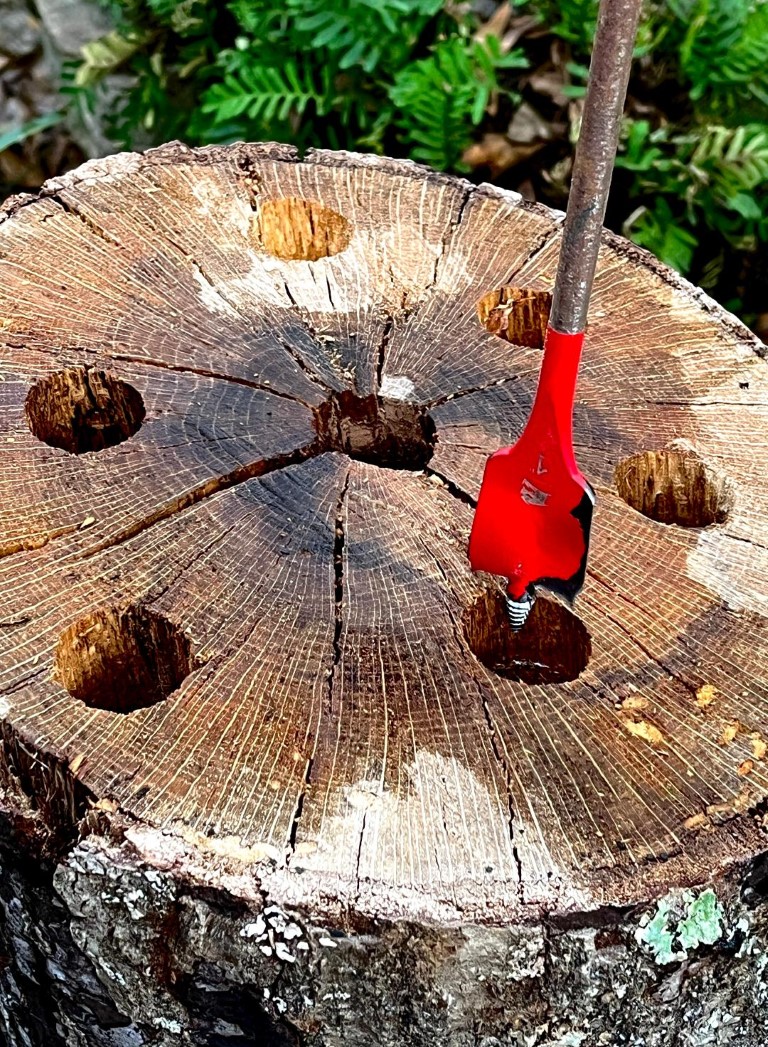Select trees that withstand Mississippi storm damage
Published 7:56 am Monday, April 5, 2021

- While certain tree characteristics can help them withstand high winds, hurricanes and tornadoes are still devastating to trees. (Photo by MSU Extension Service/John Kushla) Alt text -- A few trees remain standing among an area with snapped off pines.
By Bonnie Coblentz
MSU Extension Service
STARKVILLE – Mississippi weather can damage trees in many ways, making it crucial to select wisely when choosing trees for the landscape.
The Mississippi State University Extension Service has long provided data on the performance of numerous individual tree species in Mississippi landscapes, both native varieties and others suited to growing in this region. The 340-mile-long state encompasses four USDA cold hardiness zones, from zone 9a at the Gulf of Mexico through zone 7b in north Mississippi.
John Kushla, an MSU Extension forestry specialist at the North Mississippi Research and Extension Center in Verona, said the state’s trees occasionally experience ice, snow, tornadoes, hurricane winds, torrential rains, saltwater storm surges and temperatures in the single digits. Some species are better able to survive storms than others.
“It makes sense to choose tree species for the landscape that can withstand these natural events that occur in Mississippi,” Kushla said. “Storm-resistant trees will make your property safer and reduce future tree maintenance costs.”
Certain trees are capable of surviving winter ice, high winds, extensive flooding, and salt spray or seawater. Very few tree species are resistant to all these storm conditions. That means homeowners who want to plant trees can prioritize the threats most likely in their area and choose species accordingly.
“The ice storm we had this February showed residents across the entire state just how cold it can get and what ice accumulation can do to the landscape,” Kushla said. “This weeklong storm can be compared to the one that came in February 1994 that caused more than $3 billion in damage across the Deep South.”
Different tree species vary in their tolerance to ice accumulation.
“Those species most resistant to breakage from ice generally have strong branch attachment, flexible branches, low branch surface area and straight trunks,” he said.
Ice-tolerant species include bald cypress, black walnut and Eastern redcedar. Examples of trees that suffer the most damage from ice include Bradford pear, Eastern cottonwood, river birch and silver maple.
Wind can be a problem across the state, as Mississippi experiences tropical storms or hurricanes almost annually and ranks eighth nationally in the number of tornadoes per 10,000 square miles. Even a typical thunderstorm can bring severe winds. Northern counties have 55 thunderstorm days a year, while southern counties have 75 of these days.
“Healthy trees tolerate high winds best, but other characteristics enable trees to endure,” Kushla said. “Some tree species defoliate in extreme winds, which increases their chances of survival.”
Defoliating trees include live oak, flowering dogwood and crape myrtle. Other characteristics that help trees survive high winds are high wood density, high elasticity, pruned canopies, and open or tapered crowns.
Floods deprive trees of oxygen by suturing the soil with water. Floods that occur during the growing season are most devastating, while mature, healthy trees have the best chance of survival. Bald cypress is one flood-tolerant tree that can grow in Mississippi.
Salt tolerance is a big issue for trees growing in Mississippi’s coastal area. Most land plants require fresh water, but those living in areas with a higher salt content in the soil can present problems.
“However, trees in coastal counties regularly experience salt spray and seawater inundation,” Kushla said. “When saltwater waves break or high winds whip whitecaps, this salt-containing sea spray can be carried as far as 15 miles inland.”
With most vegetation, the sodium in sea salt can damage and disfigure foliage, reduce growth or even kill the plant. That means trees growing in this area must be able to tolerate some salt. American holly and southern magnolia are plants that can handle the salt spray and saline soils.
The MSU Extension Service publication, “Storm-Resistant Trees for Mississippi Landscapes,” helps landowners choose native and other varieties that can handle the state’s weather conditions. This publication lists 80 trees and shrubs that grow in Mississippi and specifies their resistance to storms.
Each species has been researched for ice resistance, wind resistance, flood tolerance, salt spray tolerance and saline soil tolerance.
“Not all trees listed will grow everywhere in the state, so it is important to match tree preference with your landscape characteristics,” Kushla said. “Additionally, several tree species that are resistant to storm stresses are not necessarily suitable to plant for other reasons.”
Kushla cited green ash and white ash as examples. Although these trees have a variety of storm resistances, they are susceptible to the emerald ash borer and are not necessarily good choices, he said.
Gary Bachman, Extension horticulturist at the Coastal Research and Extension Center in Biloxi, said not everyone has the luxury of making educated selections for their trees.
“Most landscapes already have trees and shrubs growing in them,” Bachman said. “Landowners must decide whether to deal with future storm damage to the trees they have or replace them with selections that are more tolerant of storm conditions likely in their area.”
Find Extension Publication P3111 at http://extension.msstate.edu/p





